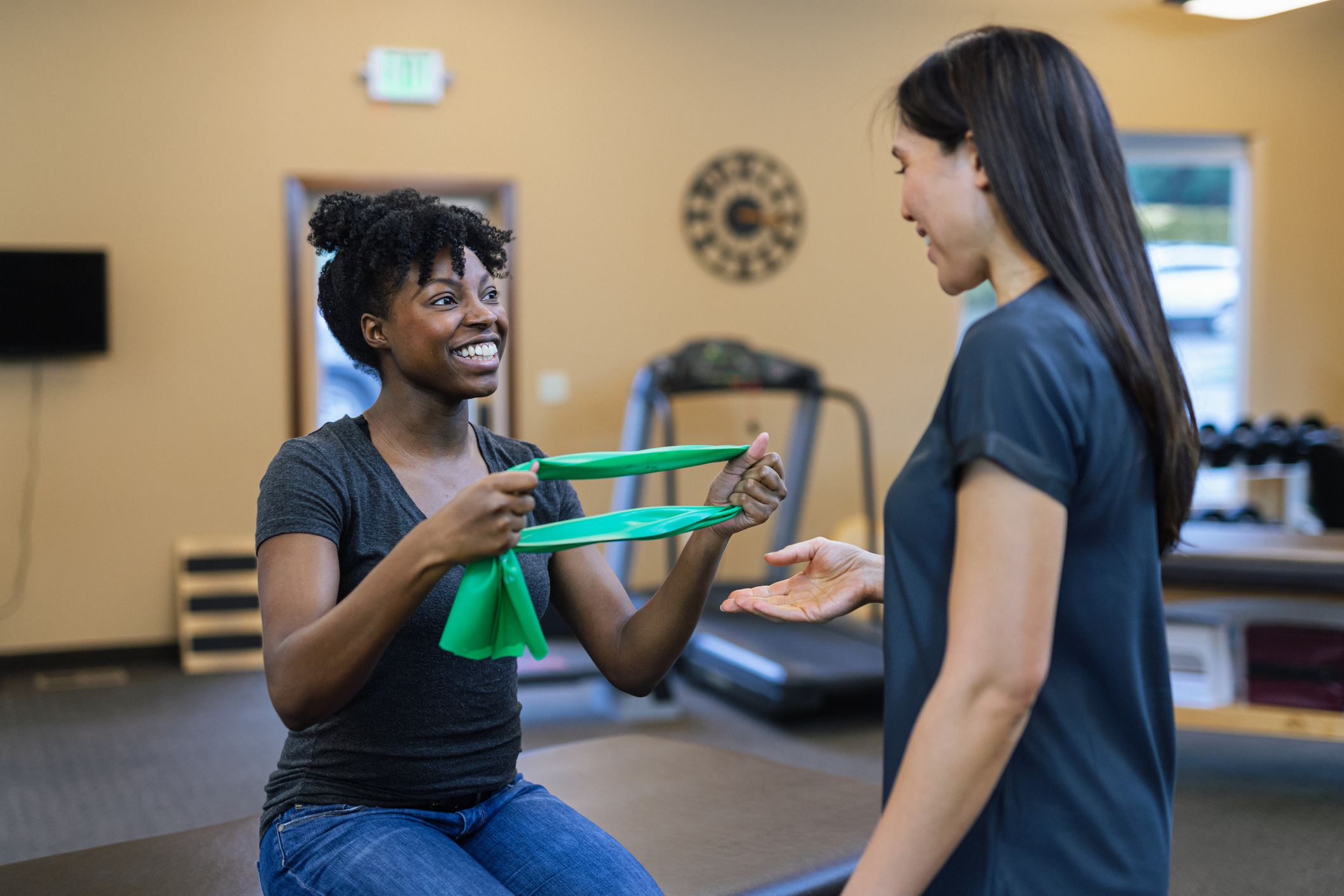Can preventive exercise reduce the risk of a sports injury?
Noncontact anterior cruciate ligament (ACL) injuries are 4-8 times more likely to occur in women than men due to sex-based differences in lower-extremity anatomy, neuromuscular control, and landing mechanics. Fortunately, the risk of ACL injuries can be significantly decreased with implementation and compliance with a preventive training program.
Miho J. Tanaka, MD, PhD, is the director of the Mass General Brigham Women’s Sports Medicine Program. An orthopedic surgeon and researcher, she’s known for her research on kneecap disorders and gender-based differences in sports injuries. Continue reading to learn about Dr. Tanaka’s journey into women’s sports medicine and how her work impacts female athletes.
What inspired you to specialize in women's sports medicine?
When I began my medical training, women’s sports medicine was not very popular. In my first job, I cared for elite athletes who had access to the highest levels of care. That’s when I noticed a real discrepancy in the level of care given to male athletes compared to female athletes. I saw female athletes who had a misdiagnosis or were unhappy with a past physician. I realized there was a big clinical gap in terms of what we know about these patients and what we know about how to treat them.
That was the beginning of my commitment to women's sports medicine. As physicians, we have to answer questions for the individual and not just the problem, in this case, in the context of the female athlete. For example, it’s important to consider nutrition and hormones when treating a bone injury instead of focusing on only the orthopedic issue. This sort of multidisciplinary work has grown into the work I share today through collaborations with my colleagues at Mass General Brigham.
What unique challenges do female athletes face regarding sports injuries and performance optimization?
 Physiologically, women can be more likely to tear or sprain their ACL than men. Your ACL is one of the strong bands of tissue that help connect your thigh bone (femur) to your shinbone (tibia) and supports your knee during cutting and pivoting activities. Although ACL tears are commonly associated with sports like football, it's often not a collision-type injury that causes an ACL injury. In fact, 70% of these injuries occur when a player cuts or pivots and the knee gives way. This is referred to as a non-contact injury. Women naturally tend to have muscle imbalances, such as relative weakness in the hamstring, which is the muscle that supports the function of the ACL. Combined with imbalances in core and hip muscles that are also more commonly identified in women, these can increase the risk of sustaining an ACL injury.
Physiologically, women can be more likely to tear or sprain their ACL than men. Your ACL is one of the strong bands of tissue that help connect your thigh bone (femur) to your shinbone (tibia) and supports your knee during cutting and pivoting activities. Although ACL tears are commonly associated with sports like football, it's often not a collision-type injury that causes an ACL injury. In fact, 70% of these injuries occur when a player cuts or pivots and the knee gives way. This is referred to as a non-contact injury. Women naturally tend to have muscle imbalances, such as relative weakness in the hamstring, which is the muscle that supports the function of the ACL. Combined with imbalances in core and hip muscles that are also more commonly identified in women, these can increase the risk of sustaining an ACL injury.
Are preventive exercises important?
One important aspect of women's sports medicine is raising awareness about issues specific to women. We now know that preventive exercises are important and have a considerable impact on a female athlete's musculoskeletal health. They can address some of the muscle imbalances women naturally tend to have in their core and hips. Implementing preventive exercise has been shown to reduce the risk of sustaining a noncontact ACL tear in women by at least 70%.
That’s why it’s crucial to educate coaches and athletes so they know their options. Female athletes should know that there are exercises that can reduce their risk of season-ending injuries.
How do hormonal fluctuations, such as those related to the menstrual cycle, affect female athletes' training, performance, and injury risk?
This is an area that is currently being studied. If you go back to the molecular cell-based studies, we know that estrogen, in general, has a negative effect on ligaments. In lab studies, it has been shown to decrease collagen synthesis, which essentially is associated with weakening of the ligaments. However, there isn't precise clinical data on the relationship between hormones and injury risk. We don't know enough to recommend how this should change how an athlete trains, but we certainly know there's a relationship that is increasingly being studied.
How do you tailor injury prevention programs for female athletes compared to male athletes—to address issues related to bone health, such as osteoporosis risk, in female athletes?
 When you compare female soccer versus male soccer or women's basketball versus men's basketball, the data shows that women are much more likely to sustain a non-contact ACL injury when compared to men, even within the same sport. Preventive exercises can make a difference in this risk. These exercises address strength deficits and improve agility, plyometrics, and proximal strengthening.
When you compare female soccer versus male soccer or women's basketball versus men's basketball, the data shows that women are much more likely to sustain a non-contact ACL injury when compared to men, even within the same sport. Preventive exercises can make a difference in this risk. These exercises address strength deficits and improve agility, plyometrics, and proximal strengthening.
Although the importance of preventative training is established within the medical field, it’s not as well known within the female athlete community. So, the more we can educate female athletes, the better. Physical therapists and athletic trainers can perform individualized screenings to prescribe customized exercises that are tailored to that athlete’s needs.
Can you discuss the role of nutrition and dietary considerations in supporting the health and performance of female athletes?
The data is very early, but we know there's a relationship between vitamin D levels and performance. Nutrition can impact how well somebody can heal after an injury. However, this type of information is not yet well integrated into orthopedic sports medicine care, even though many women tend to be vitamin D or calcium deficient.
Women tend to be more at risk for having osteoporosis, and any of the issues related to bone mineral density can influence your risk of having both fractures as well as other types of injuries down the line. While there are some studies supporting vitamin supplementation before certain types of orthopedic surgery, currently, there are no firm recommendations from a sports medicine perspective, but this is an evolving area as well.
What advancements or research are currently shaping women's sports medicine?
 Research opportunities in the field remain wide open. If you look in any direction for studies on female athletes, there's simply not enough data. Women's sports medicine is an umbrella of different disciplines that involves a multidisciplinary or holistic approach to the female athlete.
Research opportunities in the field remain wide open. If you look in any direction for studies on female athletes, there's simply not enough data. Women's sports medicine is an umbrella of different disciplines that involves a multidisciplinary or holistic approach to the female athlete.
Some of these avenues include the roles of nutrition or hormones in sports injuries. Sports psychology is another area that is growing and becoming increasingly popular. However, the key is not just the individual disciplines but also how all of the different areas work together to treat the female athlete comprehensively. We must collaborate and integrate our knowledge to treat the patient as a whole. For example, we are working on understanding how recommendations from dieticians or endocrinologists may influence recovery during surgery or rehabilitation. This type of cross-disciplinary study, to focus on the whole athlete, is what's going to move us forward in this field.
Lastly, pregnancy is one of the most substantial clinical gaps that we see when it comes to differences between males and females. We, as orthopedic surgeons, aren't typically trained in pregnancy best practices, while most obstetricians don't have musculoskeletal training. This can lead to a gap in care during a time in life that can occur in many women’s lives, and more should be studied regarding patients needing orthopedic treatment during pregnancy.
Miho J. Tanaka, MD, leads the Mass General Brigham Women’s Sports Medicine Program and is a trailblazer in sports medicine care. As a sports medicine surgeon, researcher, and program leader, she spearheads a world-class team advancing care and research in women’s sports medicine.
Learn more about Mass General Brigham’s Women’s Sports Medicine Program.
Stay connected with Mass General Brigham Health Plan by following @MGBHealthPlan on Instagram, LinkedIn, YouTube, and Facebook.
